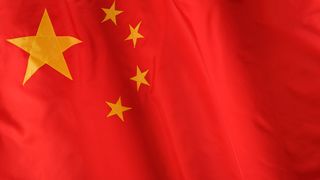At a security dialogue in Beijing a few years ago, one of our Chinese hosts asked me what I thought of the proposed One Belt, One Road initiative. I responded positively, looking at what the proposal could mean for China’s western regions in terms of economic development, and then beyond that to Central and South Asia, and ultimately to Europe.
My interlocutor nodded in agreement.
“Yes,” he said. “This is our Think West strategy. Think East is not going so well.” Then he burst into laughter.
So much for tensions in the East and South China seas.
The question that arises for Australia is what our relationship to the Belt and Road (as it now is) ought to be. Australia has excellent opportunities this year to set down three markers in our foreign and national security policies that simultaneously affirm our interests and focus our energies on our economic future while demonstrating a greater confidence in our national security arrangements. By so doing we would contribute markedly to regional security and a peaceful environment in the Indo-Pacific.
First, we should open negotiations with Beijing on appropriate protocols for Australia to join the Belt and Road. There is not only value in attracting increasing Chinese investment for northern Australia (“the road”) but also in positioning Australia to provide skills and experience in infrastructure and connectivity developments as they occur both within and beyond China’s boundaries (“the belt”). The success of our superannuation framework means billions of Australian dollars look for long-term investment locations.
Belt and Road will be a reality. Last May, Chinese President Xi Jinping made it absolutely clear how committed China was to the initiative, citing the ancient success of the Silk Roads in binding societies across vast distances in greater, mutual prosperity.
In his landmark history, The Silk Roads: A New History of the World, Peter Frankopan argues persuasively: “Establishing how useful and important old connections were in the past can be very helpful for the future — one reason why China is investing so heavily in bonding itself to the Silk Roads that lie to the west, precisely by asserting a common heritage of commercial and intellectual exchange.”
When it is considered that, according to the Australian Treasury, the Chinese economy will be worth some $42 trillion by 2030, compared with the US at $24 trillion, then the scale of this reality needs no amplification. We need to keep in mind that not only goods and services travel, so do ideas. Australian advice during the Beijing Olympics was not without impact.
Second, Australia should keep the Comprehensive and Progressive Agreement for the Trans-Pacific Partnership in good repair. Canada’s failure to sign the document in Da Nang, Vietnam, in November could have killed the multilateral trade treaty in the aftermath of US withdrawal.
But given the determination of Australia and Japan and other countries to see the treaty emerge as a vehicle for guaranteeing future prosperity, it did not. The fact that Britain has expressed interest in joining the TPP may be bizarre but it also reflects the value of the emerging agreement.
One caveat must be emphasised. The TPP must be kept open-ended so that should the Americans reconsider, or should China express an interest in joining, then the docking mechanisms are easy to traverse.
Finally, Australia should pursue actively closer security ties under the umbrella of the Quadrilateral Security Dialogue with India, Japan and the US. US Secretary of State Rex Tillerson, in a groundbreaking speech to the Centre for Strategic and International Studies in Washington, DC, last October, appropriated the Indian vernacular and said there was a pressing requirement for the US and India to “do the needful” and elevate relations to a closer and more effective level.
Japan and Australia were also mentioned in this speech, which focused on keeping the global commons open in the Indo-Pacific, and greater co-operation on issues ranging from counter-terrorism to humanitarian and disaster relief. Tillerson noted that both India and the US are introducing P-8 Poseidon aircraft into their military capabilities. So is Australia. For the future, Australia should seek to join Operation Malabar with the US, Japan and India. It is not improbable that in the years ahead Australian P-8s and similar Indian aircraft should take off from respective bases in the Andaman and Cocos islands, to contribute to regional stability and security.
Australia can afford to be assertive in its interests and be prepared to weather criticism. We are not embracing a doctrine of containment of China, which is a nonsense. True, Japan sees the Quadrilateral as a potential vehicle for competing with Belt and Road. This does not present an insurmountable problem. Competition on a global scale on investment outcomes is surely to be welcomed.
None of the foregoing, however, is to minimise some of the difficulties that lie ahead. It can be frustrating to see discussions, particularly with India, apparently make progress, only to recede and then slip sideways. But we should also seek to “do the needful”.
Fortunately in the political fever swamp of Canberra there still exists a considerable degree of bipartisanship on foreign policy, national security, and trade. This stands to the credit of the leadership and protagonists on both sides of the aisle. The three markers outlined above provide outstanding opportunity to underline and reinforce this bipartisan consensus in the national interest.
As well, the three markers enable powerful arguments to be made in support of a vigorous Australian global presence, emphasising our interests with allies and partners. Indeed, early thought should be given to extending the Quadrilateral among other regional democracies whose values we share, including South Korea and Indonesia.
As Malcolm Turnbull talks with our partners in Japan, there is no better diplomatic occasion to advance Australian imperatives in such a purposeful manner.






